|
|
|
Sort Order |
|
|
|
Items / Page
|
|
|
|
|
|
|
| Srl | Item |
| 1 |
ID:
024888
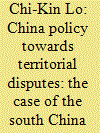

|
|
|
|
|
| Publication |
London, Routledge, 1989.
|
| Description |
ix,212p
|
| Standard Number |
0-415-00927-8
|
|
|
|
|
|
|
|
|
|
|
|
Copies: C:1/I:0,R:0,Q:0
Circulation
| Accession# | Call# | Current Location | Status | Policy | Location |
| 030813 | 341.42/LO 030813 | Main | On Shelf | General | |
|
|
|
|
| 2 |
ID:
133060
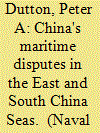

|
|
|
|
|
| Publication |
2014.
|
| Summary/Abstract |
China pursues its security through interior strategies that involve the development of rings of security around central areas of national interest. The Chinese have long felt vulnerable from the sea, and their current maritime strategy seeks to reduce that vulnerability by extending a ring of maritime control around China's periphery. China pursues this control through a combination of forcestructure development and legal assertions. Tensions arise because China's strategy conflicts with the territorial claims, resource interests, and security concerns of other states in East Asia. China's strategy also causes friction with the United States, which relies on freedom of navigation in maritime East Asia for American security interests and which must reassure regional allies and partners that American security guarantees are meaningful. In order to ensure the position of the United States in East Asia, American policies must focus on maintaining the region as an open, maritime system. This requires continuous development of technological advantages to ensure that the center of power in Asia does not migrate from the maritime domain to the continent. It also requires the United States to support the ability of allies, friends, and partners to resist China's nonmilitarized coercion, as well as to reinforce the normative structure that supports the efficacy of maritime power in the region and around the globe.
|
|
|
|
|
|
|
|
|
|
|
|
|
|
|
|
| 3 |
ID:
085053


|
|
|
| 4 |
ID:
085729
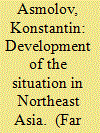

|
|
|
|
|
| Publication |
2008.
|
| Summary/Abstract |
Economic zones centered on seaports have a rich history that goes back to the mid -16th century when the first-ever free port came into being. Free trade regime operated in different period through the middle Ages in Genoa, Venice, Hamburg and Bremen. The chief causes that brought them to life were the high customs duties cities. Free trade regime was frequently instituted as new ports were built in order to attract cargo traffic and invigorate trade.
|
|
|
|
|
|
|
|
|
|
|
|
|
|
|
|
| 5 |
ID:
151255
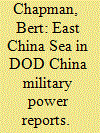

|
|
|
|
|
| Summary/Abstract |
The National Defense Authorization Act of 2000 saw Congress require the Department of Defense (DOD) to prepare an annual report on Chinese military power. This report contains classified and unclassified editions. Documenting Chinese military developments, strategy, and trends are critical parts of these reports. Beijing`s military activities in the East China Sea (ECS) are important report components. This work explains the importance of these and other DOD reports for those studying ECS developments, examines how DOD has documented Beijing`s military activities within these publicly accessible reports, and describes how members of Congress have reacted to ECS developments during the Obama Administration.
|
|
|
|
|
|
|
|
|
|
|
|
|
|
|
|
| 6 |
ID:
149672


|
|
|
|
|
| Summary/Abstract |
Given the abundance of evidence that disputed territory matters, we know remarkably little about the origins of territorial claims. We argue that the presence of competing historical border precedents is central to the emergence of territorial claims. We outline why precedents provide opportunity to make claims and provide two possible explanations for why leaders have incentive to claim along precedents. One possibility is consistent with the conventional wisdom that incentive derives from territorial characteristics such as natural resources or strategic significance. A second and more novel explanation is that the persistent coordination effects of historical boundaries provide the incentive to draw claims along them. We use new data on the location of historical boundaries from the peace of Westphalia until the start of the French Revolution to show that historical border precedents drive the emergence of territorial claims after the Congress of Vienna and that persistent coordination effects provide incentive to dispute historical precedents.
|
|
|
|
|
|
|
|
|
|
|
|
|
|
|
|
| 7 |
ID:
174520
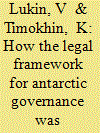

|
|
|
|
|
| Summary/Abstract |
ON DECEMBER 1, 1959, the Antarctic Treaty was signed by Australia, Argentina, Belgium, Great Britain and Northern Ireland, New Zealand, Norway, the Soviet Union, the United States, France, Chile, the Union of South Africa, and Japan. Its founders were the states engaged in scientific research on the sixth continent as part of the 1957-1958 International Geophysical Year (IGY) program. The Antarctic Treaty was the first international legal act to regulate the activities of countries, establish a governance framework and determine the nature of interstate relations in the Southern Polar Region. Drafted at the height of the Cold War, the document became a model for defusing international tension and an example of practical joint effort by states to address global scientific problems. Peace, international cooperation, research, and environmental protection were the fundamental objectives of the Treaty.
|
|
|
|
|
|
|
|
|
|
|
|
|
|
|
|
| 8 |
ID:
131331
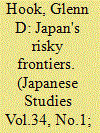

|
|
|
|
|
| Publication |
2014.
|
| Summary/Abstract |
This article investigates Japan's current role in the Senkaku Islands. The government maintains administrative control of these tiny, uninhabited islands and rocks at the frontier of Japan, but both the governments of China and Taiwan dispute Japanese claims to sovereignty and claim sovereignty over the islands themselves. Whilst much of the extant literature examines these competing claims, this article instead explores the relationship between risk, sovereignty and governance at the frontiers of Japan. It seeks to demonstrate in particular how the governance of Japan's maritime frontiers reflects a broader process of the recalibration of risk by the Abe Shinz? government as part of ending the postwar regime. Its main purpose is twofold: first, to illuminate how the government carries out administrative control and governance of a remote, uninhabited territory when sovereignty is challenged and in dispute; and second, to elucidate how the government's recalibration of risk generates a range of costs for the Japanese market and society as a result of the deterioration of relations with China arising from the way risk is being recalibrated.
|
|
|
|
|
|
|
|
|
|
|
|
|
|
|
|
| 9 |
ID:
133990
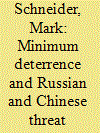

|
|
|
|
|
| Publication |
2014.
|
| Summary/Abstract |
Minimum Deterrence advocates, such as the Global ZERO report chaired by retired General James Cartwright, often urge the elimination of the U.S. triad of ICBMs, SLBMs, and bombers and minimum modernization of U.S. nuclear forces. These recommendations ignore fundamental realities. Both Russia and China have announced that they intend to increase their nuclear forces and both are modernizing their forces. Russia and China regard the U.S. as their main enemy and are arming against us. The Minimum Deterrence assumption that there is no risk of a conflict between the U.S. and Russia or China is a dangerous one. Both Russia and China have significant territorial claims against their neighbors. Russian claims to the Arctic Ocean and Chinese claims over the South China Sea are particularly troubling. China continues to threaten war over Taiwan. China has increasingly used military might to support its territorial claims in the South China Sea, creating incidents that have the potential to escalate into war. The most fundamental problem with Minimum Deterrence is that it intentionally degrades our deterrence of nuclear or other WMD attack, as well as our ability to deter nuclear escalation in a situation where the U.S. provides allies a credible nuclear umbrella. U.S. failure to provide a credible nuclear umbrella could result in Japan and, possibly other nations, deciding to go nuclear in order to protect themselves.
|
|
|
|
|
|
|
|
|
|
|
|
|
|
|
|
| 10 |
ID:
116308


|
|
|
|
|
| Publication |
2012.
|
| Summary/Abstract |
Conflicts in the Caucasus began as a result of the weakening of the institutions of the Soviet Union. Since then there have been some major transformations. Initially, there were 'triangular conflicts' with the centre (Moscow) on the one side and two competing national projects on the other side (a Union Republic and a minority group with an autonomous status within this republic). After the collapse of the Soviet Union, these conflicts evolved into bilateral ones between two popular-nationalist movements with competing territorial claims: newly independent nation states, on the one hand, and minority groups with autonomous status, on the other.
|
|
|
|
|
|
|
|
|
|
|
|
|
|
|
|
| 11 |
ID:
122073
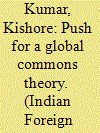

|
|
|
|
|
|
|
|